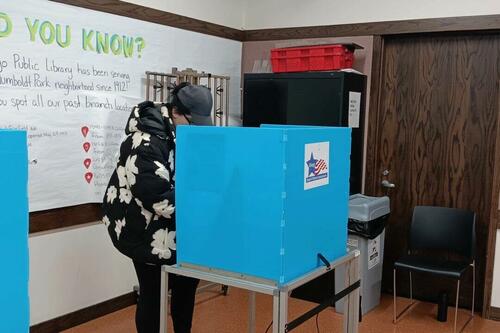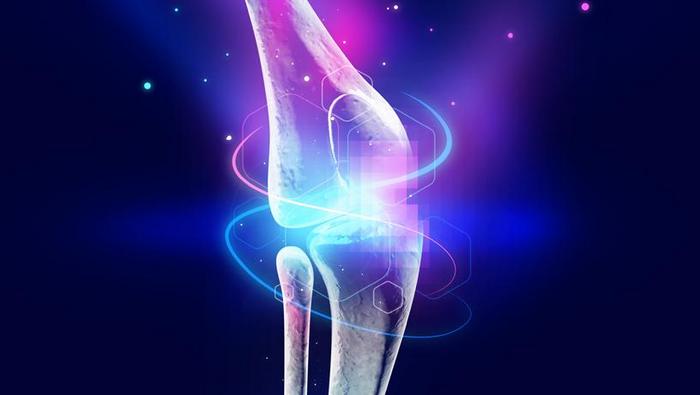A team of researchers from Columbia University Irving Medical Center (CUIMC) and Columbia Engineering has been awarded up to a $38.95 million contract from the Advanced Research Projects Agency for Health (ARPA-H) to build a living knee replacement from biomaterials and human stem cells, including a patient’s own cells. ARPA-H is a federal funding agency that funds transformative biomedical and health research breakthroughs, rapidly translating research from the lab to applications in the marketplace.
The Award
The award, part of the ARPA-H’s Novel Innovations for Tissue Regeneration in Osteoarthritis (NITRO) program, will support the development of NOVAJoint, a revolutionary biocompatible, low-cost, patient-specific knee joint replacement. This high-risk project builds upon more than two decades of collaborative musculoskeletal research at Columbia in engineering and medicine, and promises to offer a transformative solution for the more than thirty million people in the U.S. who suffer from osteoarthritis. NITRO is the first Health Science Futures specific program under the new ARPA-H agency, established by the Biden Administration.
The project is led by Clark T. Hung, Professor and Vice Chair of the Department of Biomedical Engineering and Professor of Orthopedic Science (in Orthopedic Surgery) at Columbia Engineering, and Nadeen O. Chahine, Associate Professor of Biomedical Engineering in the Department of Orthopedic Surgery at Columbia University Vagelos College of Physicians and Surgeons, leaders in tissue regeneration and orthopedic research.
“ARPA-H is a hugely important endeavor that could bring about a breakthrough in personalized and patient-specific solutions,” said Shih-Fu Chang, Dean of Columbia Engineering. “As society seeks to address the challenge of population aging, such collaborative approaches combining engineering and medicine will help improve conditions for those with osteoarthritis and many other musculoskeletal conditions.”
“We saw during the COVID pandemic just how fast science can move when teams of researchers are given the support and resources to work together,” said Katrina Armstrong, Dean of the Faculties of Health Sciences and the Vagelos College of Physicians and Surgeons, and Executive Vice President for Health and Biomedical Sciences, Columbia University. “By focusing Columbia’s expertise in biomedical engineering and orthopedic surgery onto a single goal, this funding from ARPA-H has the potential to rapidly revolutionize the way we treat osteoarthritis and the way we do biomedical research in the future.”
Impact of Osteoarthritis
Osteoarthritis is a degenerative joint disease that is the most common type of arthritis. It gradually worsens over time as cartilage, the specialized connective tissue that covers the ends of bones, wears down, leading to pain, stiffness, and loss of mobility. Osteoarthritis is already the third most common type of disability and has an estimated economic burden of more than $136 billion per year. It disproportionately affects women, the elderly, certain racial/ethnic minorities, and those with lower socioeconomic status. The prevalence of knee osteoarthritis has been rising due to aging of the population, increasing rates of joint injury, and, significantly, obesity.
The clinical gold standard treatment for knee joints ravaged by pervasive OA or traumatic injury is a total joint replacement using prosthetic implants made of metal and plastic. Although knee replacement is widely successful, there are some major drawbacks to these conventional materials. There can be life-changing complications and limitations of current artificial knee replacements, including infection, loosening, hardware failure, stiffness, abnormal kinematics (i.e., the way a knee moves), instability, and persistent pain. Historically, knee replacements have had a limited lifespan with a portion failing at 15 to 20 years due to plastic wear or implant loosening. This means that younger patients may need one or even two revision implants. The demand for total knee replacements is projected to grow by 673% — 3.48 million procedures from 2005 to 2030 — with total knee revisions projected to grow 601% between 2005 to 2030.
NOVAJoint — a living solution to ravaged knees
With the ARPA-H award, the researchers propose to design NOVAJoint to address the urgent, unmet clinical need for a permanent solution for patients with advanced OA where a conventional knee replacement is indicated. The project’s goal is to develop a replacement knee of regenerated living cartilage and bone that integrates seamlessly with the native bone and restores pain-free joint function. Since cells are required to regenerate and maintain this living implant, the team will create two versions of NOVAJoint: a version that uses patient’s own cells and one that uses donor cells. The researchers expect NOVAJoint to substantially extend the implant life, reducing complications, and to become a permanent and final procedure for the treatment of osteoarthritis of the knee. With an aggressive timeline, in the first two years, the team will create the first prototypes before moving into preclinical and clinical studies in the final three years, including a Phase 1 safety clinical trial in the final year.
Though the first NOVAJoint is still in development, many of the technologies and scientific discoveries necessary to create the joint have already been developed and validated by Columbia researchers through funding from the National Institutes of Health, National Science Foundation, Department of Defense, and institutional support.
“The ARPA-H NITRO program has enabled us to leverage our innovative technologies and expertise to solve one of the most difficult challenges in biomedical engineering,” said Hung, a groundbreaking researcher in musculoskeletal regeneration.
The Collaborators
The NOVAJoint team will fabricate a living knee replacement using modern manufacturing techniques and capitalizes on the critical mass of musculoskeletal researchers at Columbia with collective expertise in biomechanics, biomaterials, stem cells, and orthopedic surgery from across the School of Engineering and Applied Science, Vagelos College of Physicians and Surgeons and College of Dental Medicine, building on a decades-long history of collaboration between the Departments of Orthopedic Surgery and Biomedical Engineering. The project team is multidisciplinary, with scientific leadership from faculty in the Departments of Biomedical Engineering, Mechanical Engineering, Orthopedic Surgery, and Dental Medicine. Co-PIs and Task Leads include Treena Arinzeh, Professor of Biomedical Engineering; Gerard Ateshian, Andrew Walz Professor of Mechanical Engineering and Professor of Biomedical Engineering; Alice Huang, Associate Professor of Bioengineering (in Orthopedic Surgery); and Roshan Shah, Russell A. Hibbs Associate Professor of Orthopedics (in Orthopedic Surgery) and Director of Complex Reconstruction; Chang Lee, Associate Professor of Craniofacial Engineering (in Dental Medicine).
Working with the Columbia team is James L. Cook, William & Kathryn Allen Distinguished Chair in Orthopaedic Surgery, University of Missouri, who will lead preclinical testing. Drs. Cook and Shah will also lead the clinical trial, which will be recruiting patients at both universities. The team is partnering with New York Stem Cell Foundation and New York Blood Center for GMP manufacturing of NOVAJoint.
“This is a big challenge, but by creating a large and experienced team that works well together and can be focused on one goal, we expect to succeed,” said Chahine, a leader in orthopedic research. “NOVAJoint will mark a major milestone in the field of regenerative medicine and orthopedic surgery, and has the potential to revolutionize musculoskeletal treatments of the many joints that degenerate with age or injury.”
Equity and Commercialization
In addition to the advancement in science, equity and commercialization are key pillars to the programmatic success of this project. Part of NITRO’s vision is to establish a clear path to commercialization, which is a prerequisite for successful clinical translation and impact of disruptive technologies such as NOVAJoint. ARPA-H has a firm commitment to equitable healthcare access for all, irrespective of race, ethnicity, gender/gender identity, sexual orientation, disability, geography, employment, insurance, and socioeconomic status.
“Our goal is to push knee replacement to its next stage of evolution and to create a better solution to osteoarthritis for all Americans. Every day patients ask me about new advancements in knee replacement surgery, hoping for validation of their years of suffering before seeking care,” says Dr. Shah. “Now I have something to tell them. I think the big orthopedic companies will be watching this project closely, and will be vying for the chance to commercialize NOVAJoint nationally.”
In order to meet these programmatic goals, the team will also be leveraging the expertise and resources of the Irving Institute for Clinical and Translational Research and Columbia Technology Ventures. The NOVAJoint team will include a full-time Equity Officer who will help develop key equity performance indicators. The equity officer will work closely with Rachel C. Shelton, Associate Professor of Sociomedical Sciences at Mailman School of Public Health and co-director of the Irving Institute’s Community Engagement Core Resource (CECR) and Lisa Royse, Department of Orthopedic Surgery, University of Missouri, to foster research conducted in partnership with community stakeholders to better inform the application of scientific findings to clinical and community settings.
The Research Team
The scientific and clinical faculty at Columbia include:
- Clark Hung, Professor of Biomedical Engineering and Orthopedic Sciences (in Orthopedic Surgery)
- Gerard Ateshian, Andrew Walz Professor of Mechanical Engineering and Professor of Biomedical Engineering
- Nadeen Chahine, Associate Professor of Biomedical Engineering (in Orthopedic Surgery)
- Alice Huang, Associate Professor of Bioengineering (in Orthopedic Surgery)
- Treena Arinzeh, Professor of Biomedical Engineering
- Chang Lee, Associate Professor of Craniofacial Engineering (in Dental Medicine)
- Roshan Shah, Russell A. Hibbs Associate Professor and Director of Complex Reconstruction at Columbia University
- Kam Leong, Samuel Y. Sheng Professor of Biomedical Engineering (in Systems Biology)
- Helen Lu, Percy K. and Vida L.W. Hudson Professor of Biomedical Engineering and Senior Vice Dean of Faculty Affairs and Advancement
- X. Edward Guo, Stanley Dicker Professor of Biomedical Engineering and Professor of Medical Sciences (in Medicine)
- José McFaline-Figueroa, Assistant Professor of Biomedical Engineering
- Samuel Sia, Professor of Biomedical Engineering, Vice Provost for the Fourth Purpose and Strategic Impact
- Steve Thomopoulos, Robert E. Carroll and Jane Chace Carroll Laboratories Professor of Biomechanics (in Orthopaedic Surgery and Biomedical Engineering)
- Elan Goldwaser, Assistant Professor of Sports Medicine (in the Center for Family and Community Medicine, in Medicine and Orthopedic Surgery) at CUIMC
- Mildred Embree, Dr. Edwin S. Robinson Associate Professor of Dental Medicine
- Joanna Smeeton, H.K. Corning Assistant Professor Rehabilitation and Regenerative Medicine Research (in Rehabilitation and Regenerative Medicine) (in Genetics and Development)











































